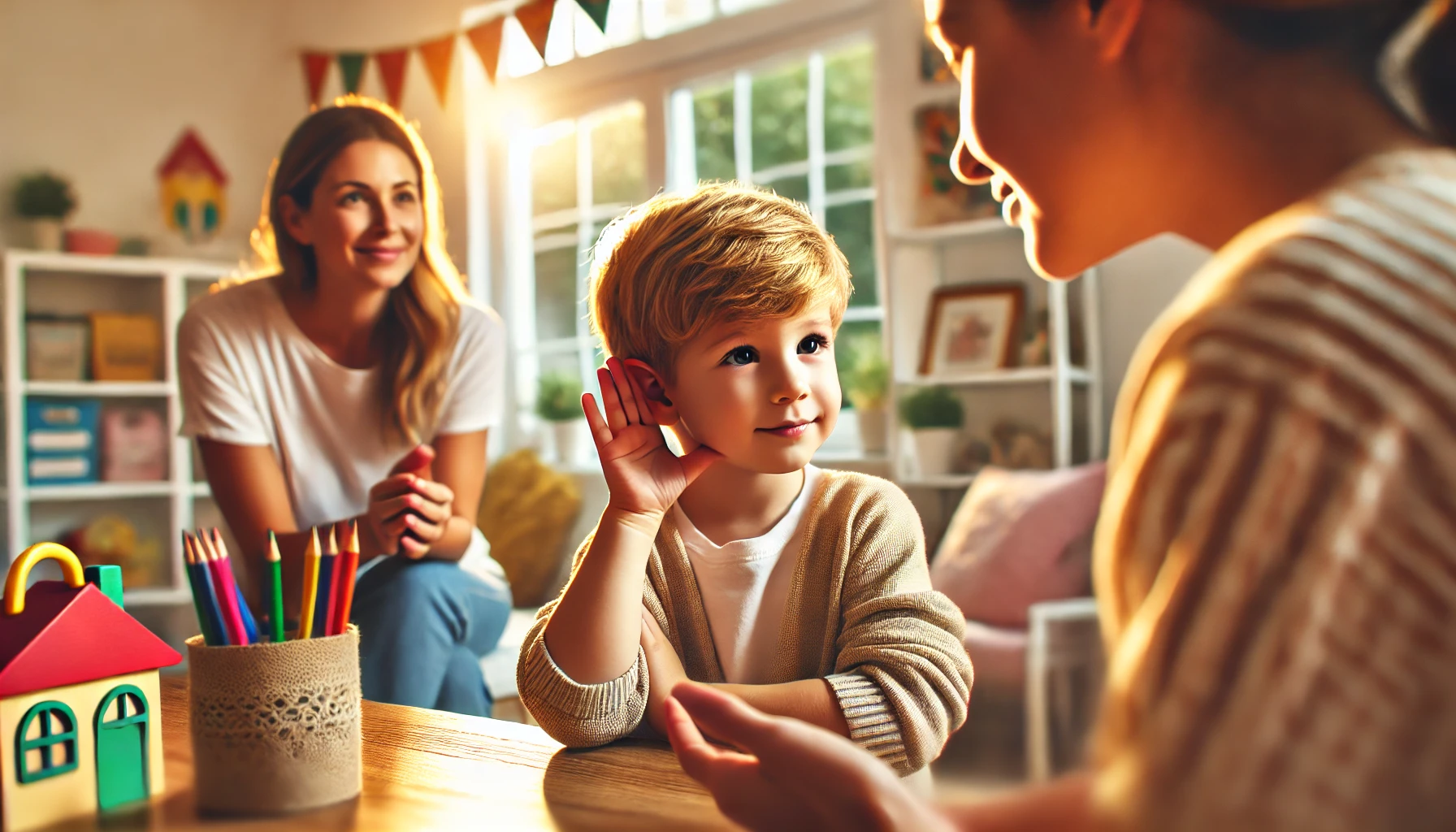How to Teach Young Children About Being a Good Listener
Teaching young children to be good listeners helps them develop strong communication skills, empathy, and self-control. When kids learn to listen attentively, they build better relationships, follow directions more effectively, and gain a deeper understanding of the world around them. Parents can encourage active listening through interactive activities, role-modeling, and consistent practice. In this article, we’ll explore practical ways to help children develop listening skills.
Why Teaching Good Listening is Important
- Improves communication – Helps children understand and respond appropriately in conversations.
- Builds patience and self-control – Teaches kids to wait and focus on what others are saying.
- Encourages empathy – Helps children understand others’ emotions and perspectives.
- Enhances learning skills – Improves concentration in school and daily activities.
- Strengthens relationships – Makes interactions more meaningful and respectful.
1. Explain What Being a Good Listener Means
Helping children understand listening as an active skill encourages their engagement.
Activity Idea:
- Use simple explanations: “Listening means looking at the person, thinking about what they’re saying, and not interrupting.”
- Ask, “How do you feel when someone doesn’t listen to you?” to encourage empathy.
- Create a “Good Listener” poster with steps like “Eyes watching, ears listening, mouth quiet.”
What Kids Learn:
- That listening is more than just hearing words.
- How to show others they are paying attention.
- The importance of listening to understand, not just to respond.
2. Play Listening Games to Make It Fun
Interactive games teach children to focus and respond attentively.
Activity Idea:
- Play “Simon Says” to practice listening and following directions.
- Try “Whisper Chain,” where kids pass a message around in a circle.
- Use “Freeze Dance,” where kids listen for when to stop and move.
What Kids Learn:
- That listening carefully helps them succeed in activities.
- How to focus their attention even when distractions are present.
- The importance of following directions accurately.
3. Teach Kids to Make Eye Contact When Listening
Helping children focus on the speaker improves comprehension and engagement.
Activity Idea:
- Encourage eye contact and nodding to show they are listening.
- Use a mirror to practice making eye contact while talking and listening.
- Praise good listening behavior: “I love how you looked at me when I was talking!”
What Kids Learn:
- That eye contact shows respect and attention.
- How body language helps communication.
- The value of staying present in conversations.
4. Encourage Kids to Listen Without Interrupting
Teaching patience in conversations helps children learn to wait for their turn to speak.
Activity Idea:
- Use a “Talking Stick” where only the person holding it can speak.
- Practice taking turns during family discussions or storytelling.
- Remind kids, “Let the person finish speaking before you respond.”
What Kids Learn:
- That interrupting can make others feel unheard.
- How to be patient while listening.
- The importance of letting others express their thoughts fully.
5. Read Books About Listening and Paying Attention
Stories provide engaging ways to reinforce good listening habits.
Activity Idea:
- Read Lacey Walker, Nonstop Talker by Christianne Jones (about the importance of listening).
- Pause and ask, “What happened when the character didn’t listen?”
- Discuss how listening made a difference in the story.
What Kids Learn:
- That good listening leads to better understanding and friendships.
- How characters change when they learn to listen.
- The importance of paying attention in different situations.
6. Practice Active Listening with Simple Exercises
Encouraging kids to repeat or summarize what they heard strengthens comprehension.
Activity Idea:
- Play “Repeat After Me”, where kids listen to a short sentence and repeat it back.
- After reading a short story, ask, “Can you tell me what happened in your own words?”
- Use “What did I say?” exercises to check if they were paying attention.
What Kids Learn:
- That listening involves remembering details.
- How to process and summarize what they hear.
- The importance of giving their full attention.
7. Reinforce the Habit of Listening Through Daily Routines
Making listening part of everyday life encourages consistent practice.
Activity Idea:
- Give simple step-by-step instructions and have kids follow them correctly.
- Encourage meal-time conversations where everyone takes turns speaking and listening.
- Praise listening efforts: “You waited patiently for your turn to talk. That was great listening!”
What Kids Learn:
- That listening is a skill used in everyday life.
- How to follow instructions accurately.
- The benefits of giving full attention in conversations.
8. Praise and Reward Good Listening Behavior
Encouragement helps children stay motivated to practice good listening skills.
Activity Idea:
- Use a “Good Listener Chart”, where kids earn stars for listening well.
- Give positive feedback: “I loved how you listened carefully to your friend today!”
- Ask, “How did it feel when you listened carefully and understood everything?”
What Kids Learn:
- That good listening is noticed and appreciated.
- How listening helps them connect better with others.
- The motivation to continue practicing active listening.
Final Thoughts
Teaching young children about being a good listener helps them develop essential communication, patience, and empathy skills. By using games, stories, and daily conversations, parents can guide children toward understanding that listening is more than just hearing—it’s about truly engaging and respecting others.
